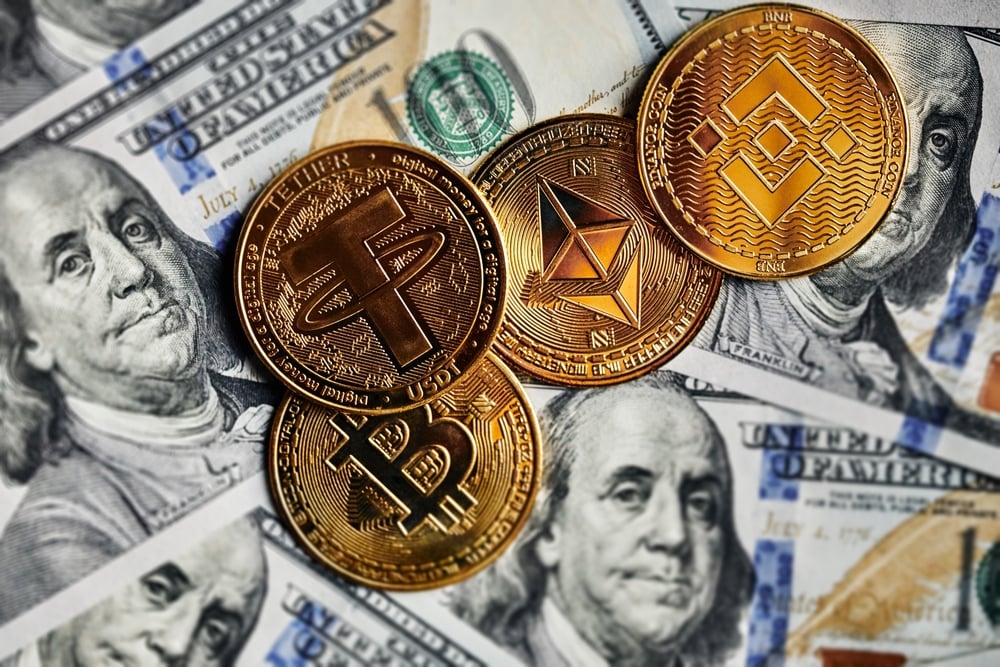Tokenisation is quickly becoming one of the most groundbreaking innovations in the financial space, with the likes of Mastercard and Visa at the forefront of its burgeoning adoption.
Analysing why tokenisation is set to transform not just the financial industry, but a plethora of sectors, Han Verstraete, CEO of tech and crypto legal compliance firm Otonomos, writes for Payment Expert on what the benefits of tokenisation means for both businesses and consumers.

Real-world asset tokenisation is having its moment. Earlier this year the world’s largest asset management firm, BlackRock, unveiled its new tokenised asset fund – the Institutional Digital Liquidity Fund.
Based on the Ethereum blockchain, the fund invests in cash, US Treasury bills and repurchase agreements. In its first week of existence, it attracted $245m from investors. BlackRock’s faith in tokenisation stretches to the top – for Larry Fink, BlackRock CEO, “the next generation for markets and the next generation for securities will be the tokenisation of securities”.
Real-world asset tokenisation is here, and it is potentially huge. Asset management firm 21.co estimates that the value of tokenised assets could be as high as $10trn by 2030; meanwhile, BCG estimates that by 2030 as much as $16trn in previously illiquid value could have been tokenised, a figure equivalent to 10% of global GDP and one they described as ‘conservative’.
Real-world asset tokenisation is already here
In some respects, Real-world asset (RWA) tokenisation has been with us for years. Stablecoins like Tether and USDC are tokens backed by reserves of US dollars. They represent billions in fiat value – Tether has a market cap of $110bn at the time of writing and USDC a market cap of over $33bn- and their use is widespread.
One 2023 Bitquery study found that there were 1.797 million holders of USDC and nearly 4.6 million holders of USDT.
As the crypto and blockchain world continues to mature, wider markets are opening. Tokenisation allows for fractional ownership and easy trading of otherwise expensive and illiquid assets. There are a range of potential use cases.
Previously, well beyond the reach of ordinary consumers, tokenisation means that rare and illiquid assets such as art can now be part-owned by ordinary investors, offering each and every one of us the opportunity to own a Picasso or Bastiani. Music royalties are another use case – rights over the revenue streams from intellectual property can also be tokenised, offering fans new ways to support and associate with their favourite artists and creators.

Finance is the biggest use case
By far the biggest use case, however, is in finance. With minimum investment thresholds that typically stretch into the millions of dollars, alternative asset classes such as private equity, hedge, and private real estate funds have previously been well beyond the reach of all but the richest of individual investors and businesses.
With the number of stock exchange listed companies in long-term decline and given the superior returns that alternative assets offer – an average annual yield of 10.48% for US private equity between 2010 and 2020, compared to 5.91% for equities listed on the S&P 500 in the same period. For example – this has meant the vast majority of savers have been locked out of the best investment opportunities. Tokenisation changes this equation.
In practical terms, tokenising an asset means tokenising the shares of the company that owns an asset. This could be a limited company, an LLC or another suitable vehicle. Once tokenised, ownership of these shares can more easily be fractionalised, driving down initial investment requirements and promoting greater liquidity of ownership. In other words, investors will more easily be able to buy and sell otherwise expensive assets that they would previously have been locked into for several years.
At the same time, tokenisation drives down the administrative costs of fund managers – digitised and standardised processes are cheaper than the current highly variable, customised and even paper-based processes by which such investments are facilitated.
The net effect will be the democratisation of finance. Ordinary savers will be given access to hitherto closed citadels of financial opportunity, meaning that they too can have a stake in some of the world’s most profitable businesses.
Scratching the surface
Alternative asset tokenisation is exciting – but it is important to remember that the real-world asset tokenisation opportunity goes far wider. Consider the real estate market. Tokenisation will allow individuals more easily to release value in their homes, the main asset most people will ever hold.
For others, it will enable them to acquire a stake in the property market that might otherwise be closed to them. Processes of conveyancing and property registration, meanwhile, will be digitised, simplified, and transformed. Use cases abound.

The BlackRock moment
What BlackRock shows us is that these trends are now gaining top-drawer institutional buy-in. Real-world asset tokenisation is no longer the purview of crypto-enthusiasts.
Whether exposed to crypto and blockchain or not, all those with an interest in finance and payments should take note.
Global opportunities require global solutions
Across the world, security tokens – tokens reflecting shares in an asset-owning company – are subject to varying regulatory regimes. To make the most of this historic opportunity, entrepreneurs seeking to utilise security tokens must be internationally oriented.
Tokenisation therefore demands a strategic approach. Given the diverse regulatory frameworks and technical requirements, international corporate structuring is advisable for businesses venturing into this space.
Furthermore, successful tokenisation hinges on expert guidance from knowledgeable professionals within a company’s ownership domain.






















